RUNNING WITH THE MULLET
with Paul MacInnis
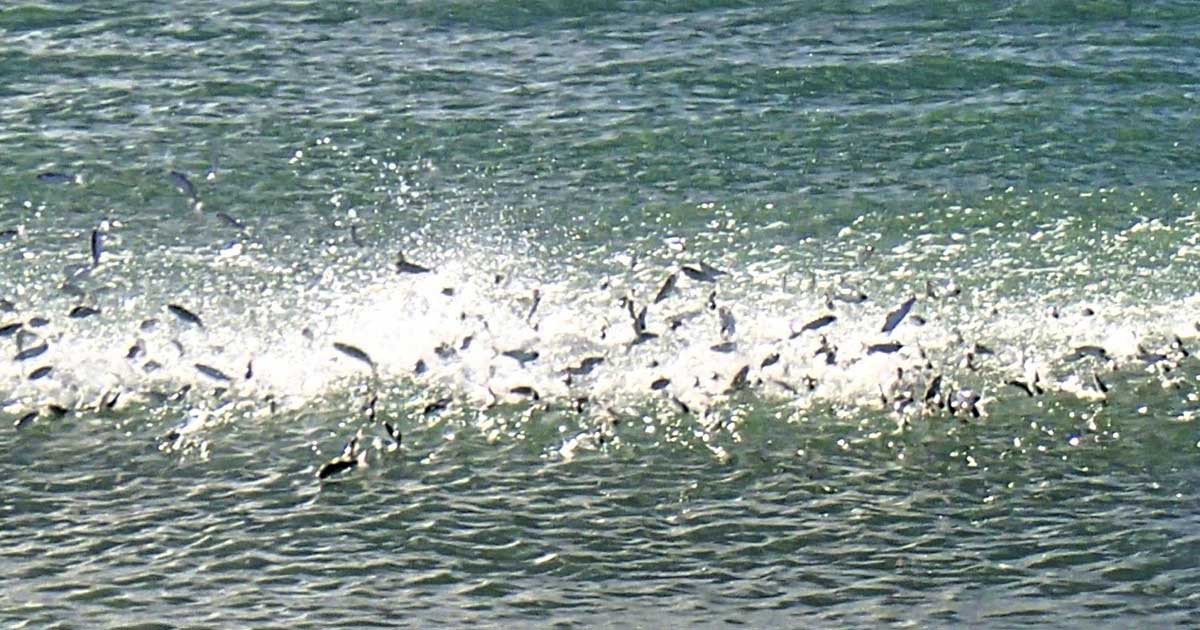
Every fall, the mullet migration brings some incredible fishing to the Space Coast.
Runners On Your Mark…
Central Florida is blessed with so many outstanding fisheries it’s tough to pick a favorite. My favorite should kick off any day now, the fall mullet run. The mullet run is a massive migration of mullet along the east coast of Florida, from fingerlings to full grown adults. Along our stretch of coast, it starts in late August, peaks in September and October, and finishes up sometime in November. Just about every predator in Florida that feeds on mullet will move in for the feast.
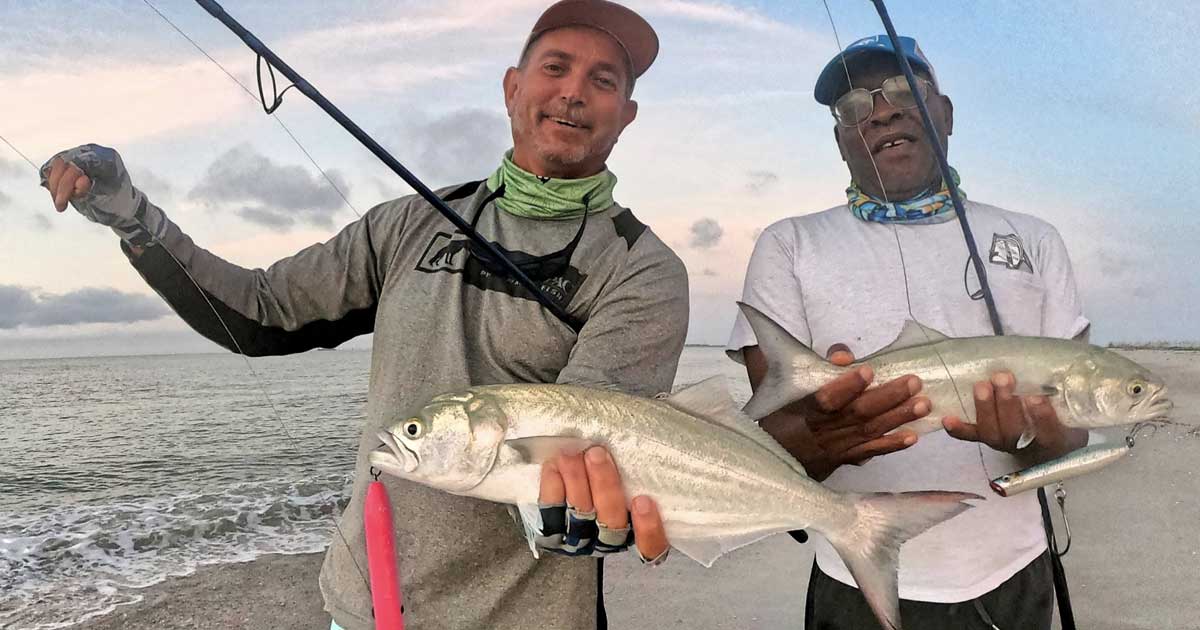
Bluefish are among the regular cast of characters chasing mullet up the coast.
Mullet Run Targets
What can you catch during the mullet run? The list is a long one. Jacks, bluefish, big ocean ladyfish and Spanish mackerel are the most common species. Some days they offer welcomed steady action. Other days they are an annoyance as they get in the way of catching the more desirable species. As far as more desirable species go, snook, redfish, seatrout, flounder and tarpon are on the list. Then there are sharks, lots of sharks. Blacktip and spinner sharks are often scary thick in the surf, a bane to some, but a boon to those who want to tangle with big, feisty fish without having to spend a lot of time or complicated effort.
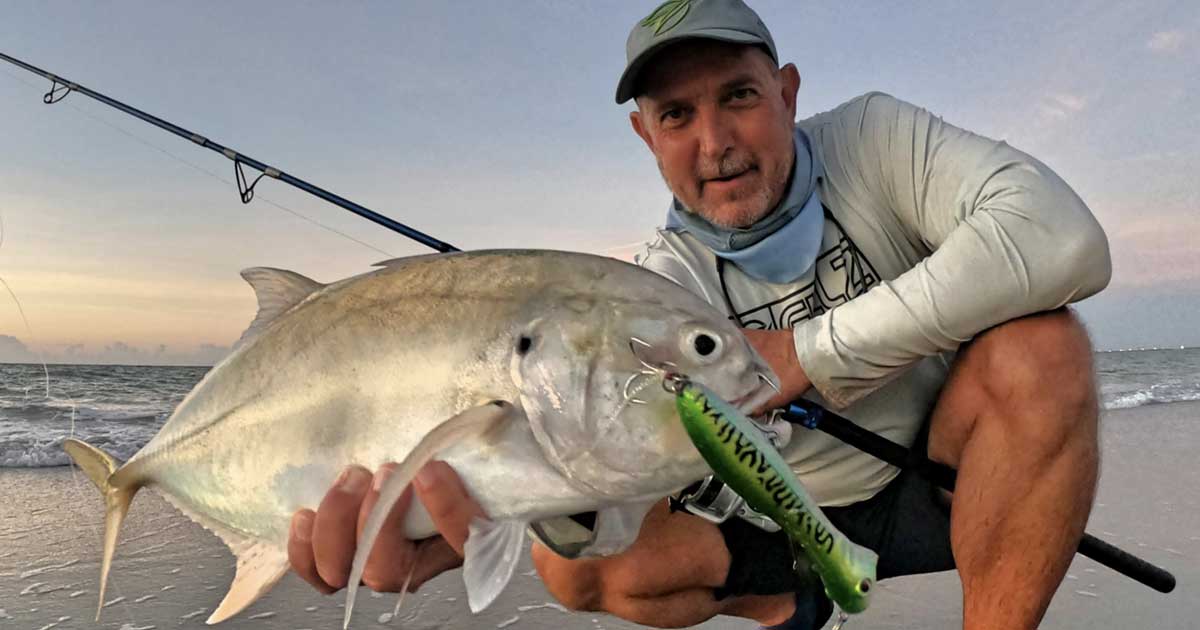
You can always count on jacks being in on the frenzy.
Where the Mullet Runs Through It
Some of the mullet migrate up our lagoons, but most make their way down along the beaches. They tend to come through in waves. Some days there is barely a trickle and other days mullet schools will darken the water and dimple the surface for miles. Obviously the quality of the fishing tends to go up the more bait is around, so mullet run fishing from the beach can range from mediocre to epic depending on your timing. You can find more consistent success by fishing one of the inlets. Ponce, Port Canaveral and Sebastian all have jetties that hinder the mullet’s southward migration. Confused mullet tend to bunch up around the north side of the inlet and predators know this. Besides the ocean species that are following the bait schools, intracoastal species come through the inlets to join the feast. This all adds up to amazing fishing around the inlets, but this is no secret so expect crowds.
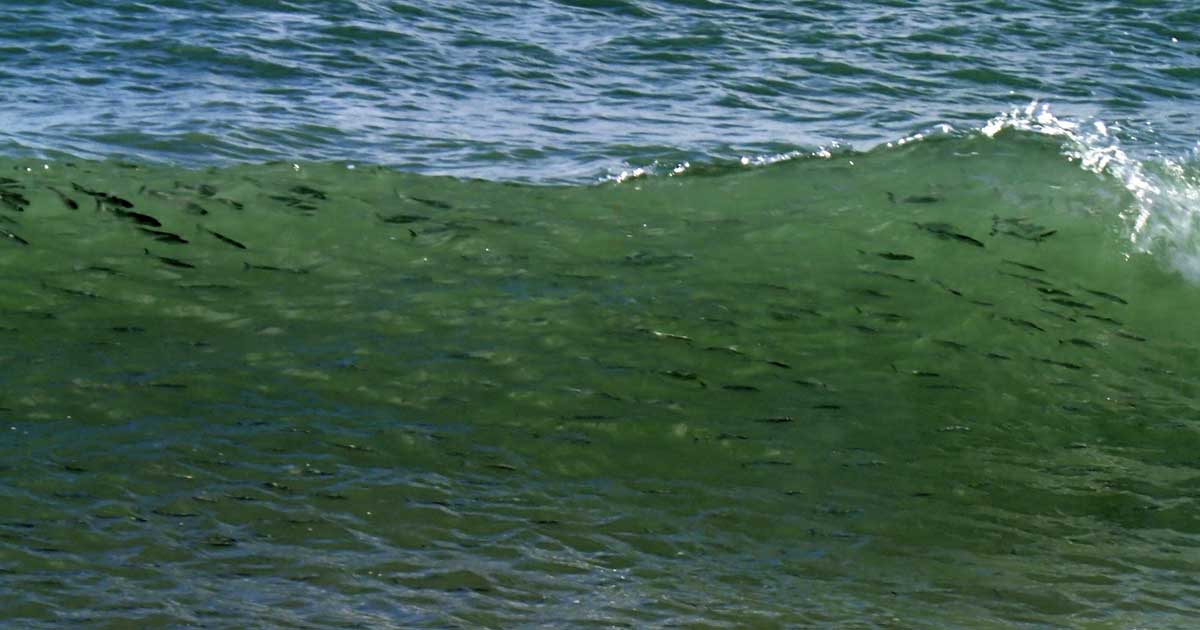
The beach is where it’s at when it comes to fishing the fall mullet run!
Gear & Tackle
Tackle selection for mullet run fishing can be as varied as the fish you might encounter. You could target anything from two pound bluefish to twenty pound snook to hundred pound tarpon to sharks the size of a small car. Your typical bass and flats fishing tackle are fine for the smaller species. A good all-around setup would be a 4000 size reel spooled with twenty pound braid on a seven to eight foot medium heavy rod. This is light enough to still be fun on smaller fish, but is heavy enough to handle snook, redfish and smaller tarpon and sharks. If you want to target bigger tarpon and sharks then a reel that holds at least 300 yards of thirty pound braid is the minimum, with forty or fifty pound braid being an even better choice.
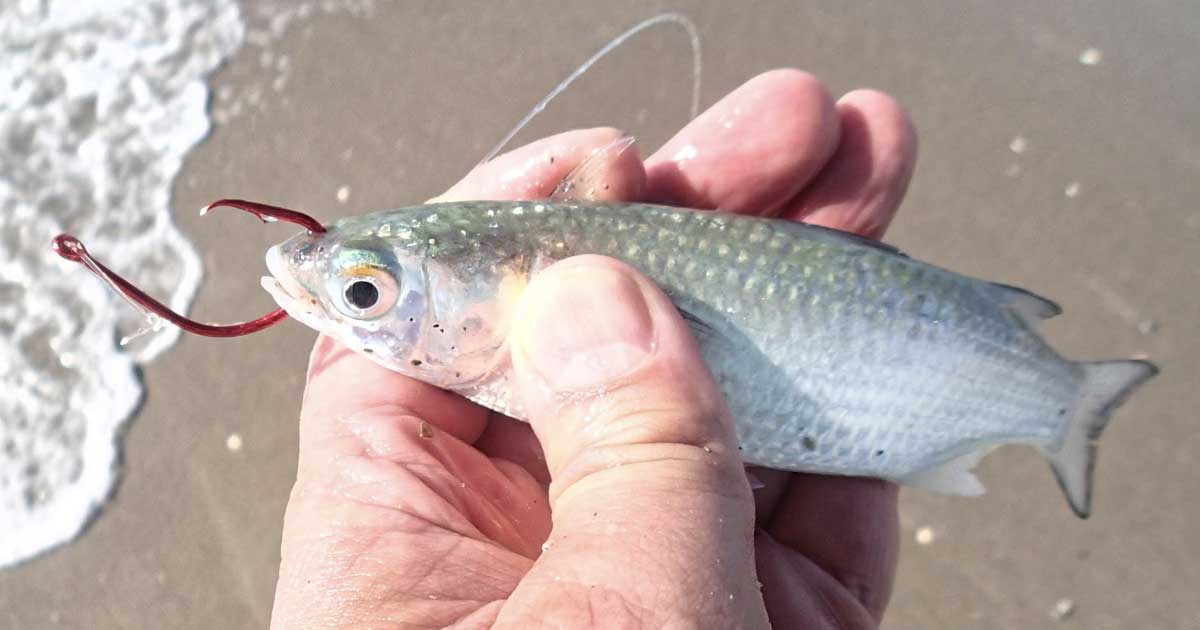
Finger mullet like these are…
Bait & Lure Selection
The beauty of the mullet run is there are many different ways to catch fish. A no-brainer is to fish a live finger mullet that you cast net right from the surf, or catch on your way to the beach. These can be fished on a classic fish finder rig made with a couple of feet of fifty to sixty pound test monofilament or fluorocarbon leader and a 2/0 to 5/0 circle hook like the Daiichi D85Z. If I’m fishing the first trough off the beach for snook and reds, I like a ½ to 2 ounce egg sinker. This rig will roll around and move a lot so it I think it increases the chance of your bait getting in front of a snook or red, but it requires a diligent angler to keep slack out of the line and make frequent re-casts. If you want a more relaxed approach where you can kick back and set the rod in a rod holder then swap out the egg sinker with a 2 to 6 ounce pyramid or sputnik sinker on a sinker slide like the Boss Kat BKSS6. If you want to try bigger baits for tarpon then a 7/0 Daiichi D84Z hook on an eighty pound test leader is a good choice. Blacktip, spinner and other sharks will require a wire leader. I prefer #10 stainless steel, single strand leader wire and a 10/0 heavy duty circle hook like the Daiichi D94VP.
Despite the effectiveness of bait, I mostly use lures during the mullet run because it’s just so much fun, especially on topwater. Just about any lure that remotely resembles a mullet will work. Keep in mind there are a lot of toothy predators that will shred soft plastics and skirted baits. I mostly use more durable baits like plugs and spoons. For plugs, choose tougher models designed for saltwater. For safety reasons I use lures with no more than two treble hooks and I often remove the forward treble or replace it with a single hook. Free swinging treble hooks are extremely dangerous when you are trying to unhook an unruly, toothy fish. I use the same leaders for lures as I use for bait. Fifty to sixty pound test mono or fluoro works for general applications, eighty pound test for bigger tarpon and wire (like #10 stainless) for sharks.
By the way, if you want experience epic blow-ups on top, try throwing topwater plugs for blacktip and spinner sharks. Sharks are particularly active early morning and late evening. If you want to have a shot at landing one, make sure you use heavy duty, through wired plugs like the Savage Gear Panic Popper and Panic Pencil Popper, or the many fine plugs in the Ocean Born line by A Band of Anglers.
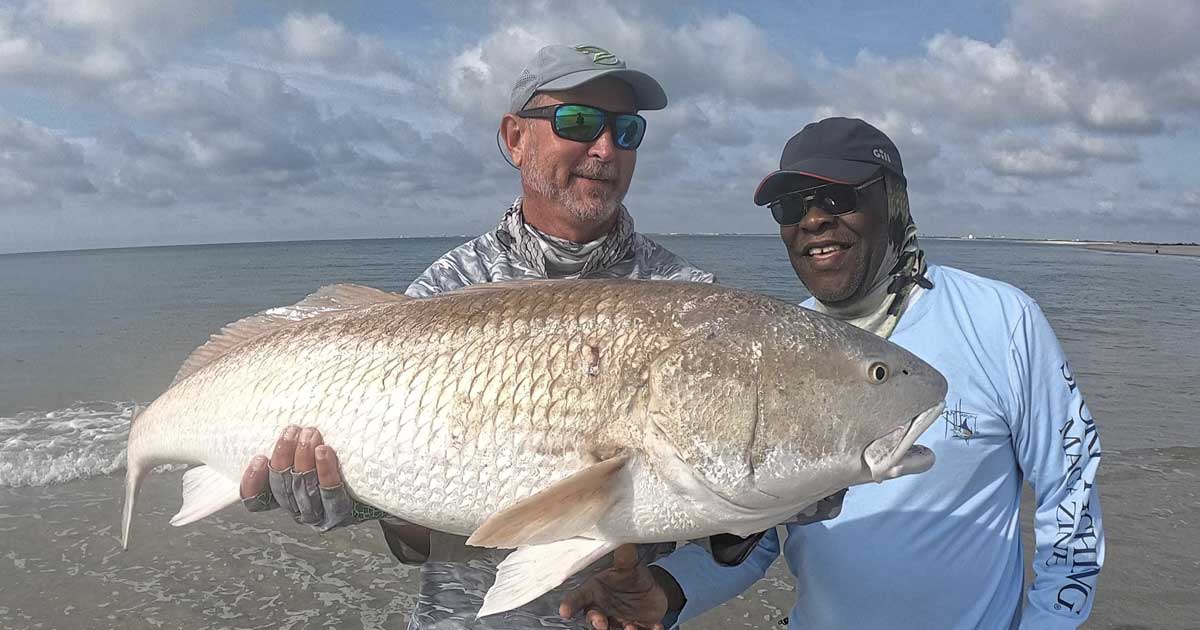
Yep, there’s some massive bull reds in on the action, too!
Schedule Accordingly!
My last piece of advice for fishing the mullet run is to pick your days carefully. The run corresponds with the peak of hurricane season and the start of fall cold fronts. Nasty, blustery weather can blow out the fishing for days. You can optimize your success during the mullet run if you have enough flexibility in your schedule to fish whenever the windows of good weather open up.
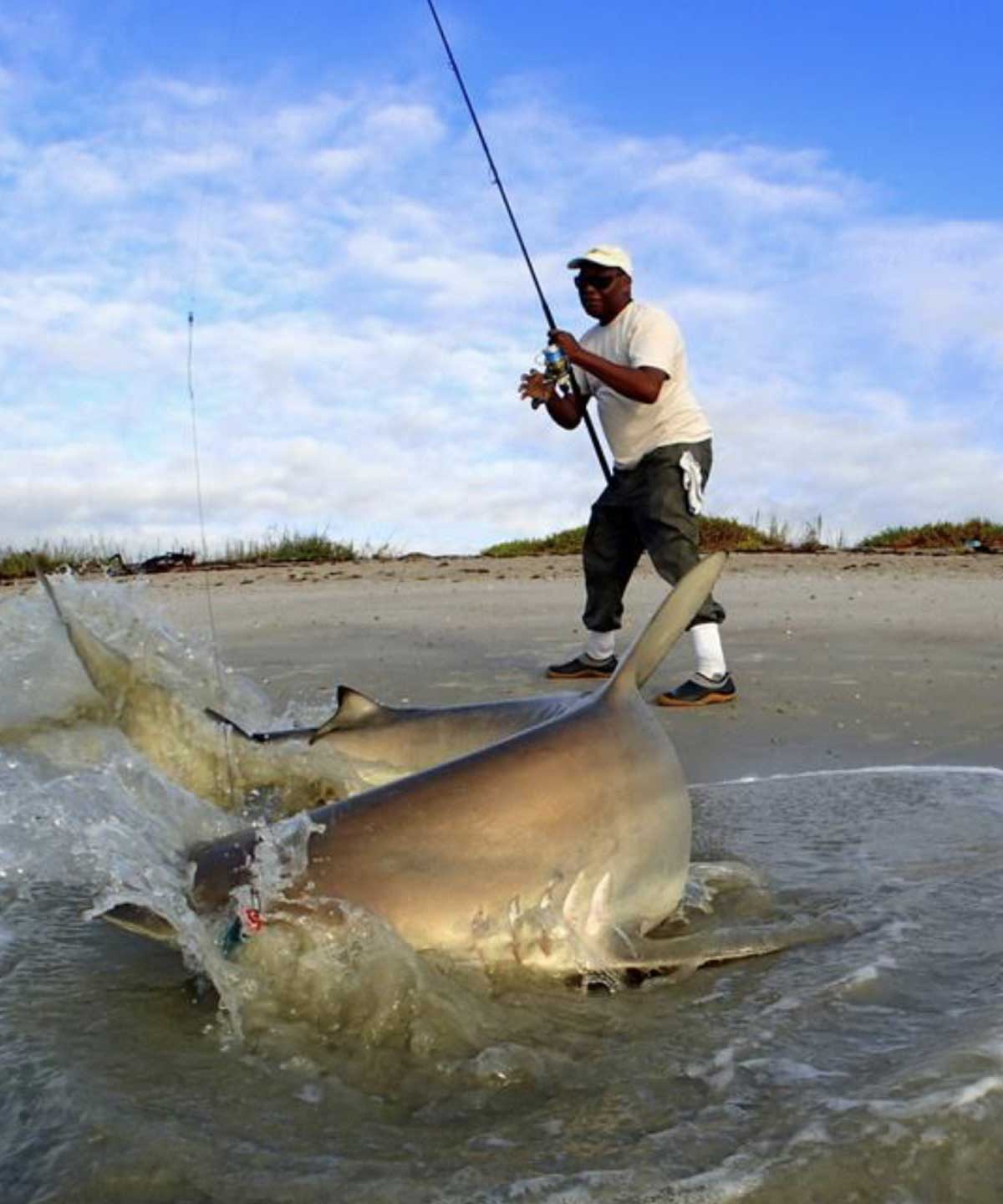
Be carful not to bite off more than you can chew and good luck out there!




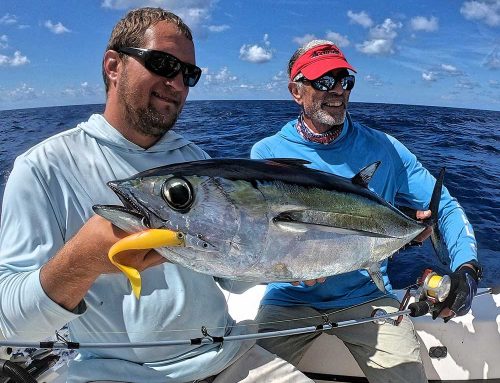
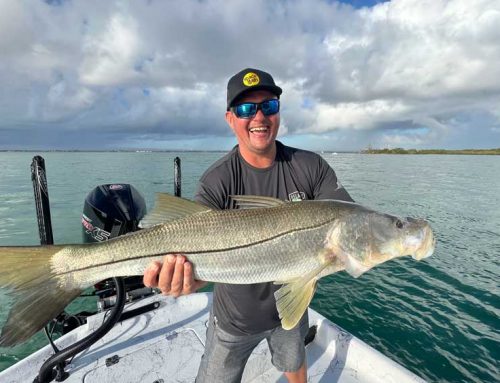


Leave A Comment
You must be logged in to post a comment.